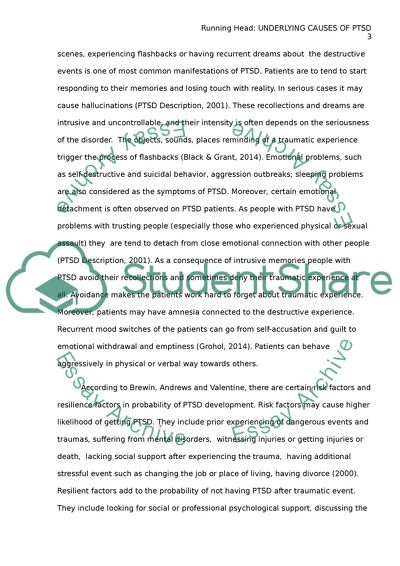Cite this document
(Underlying Causes of Post-traumatic Stress Disorder Essay Example | Topics and Well Written Essays - 1250 words, n.d.)
Underlying Causes of Post-traumatic Stress Disorder Essay Example | Topics and Well Written Essays - 1250 words. https://studentshare.org/psychology/1830921-general-psychology-research-paper
Underlying Causes of Post-traumatic Stress Disorder Essay Example | Topics and Well Written Essays - 1250 words. https://studentshare.org/psychology/1830921-general-psychology-research-paper
(Underlying Causes of Post-Traumatic Stress Disorder Essay Example | Topics and Well Written Essays - 1250 Words)
Underlying Causes of Post-Traumatic Stress Disorder Essay Example | Topics and Well Written Essays - 1250 Words. https://studentshare.org/psychology/1830921-general-psychology-research-paper.
Underlying Causes of Post-Traumatic Stress Disorder Essay Example | Topics and Well Written Essays - 1250 Words. https://studentshare.org/psychology/1830921-general-psychology-research-paper.
“Underlying Causes of Post-Traumatic Stress Disorder Essay Example | Topics and Well Written Essays - 1250 Words”. https://studentshare.org/psychology/1830921-general-psychology-research-paper.


